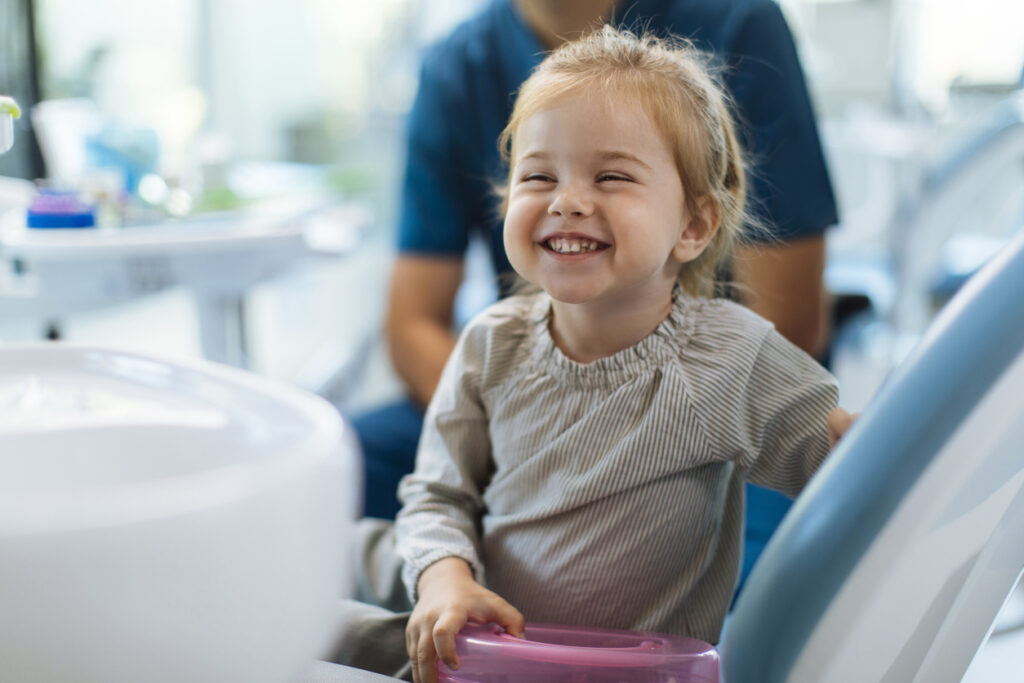 When considering dental radiographs for children, the ALARA (As Low As Reasonably Achievable) principle is used to limit exposure to radiation. Though x-rays are a valuable tool for finding problems in teeth and in the bones surrounding teeth, the risks of radiation are greater for children than for adults. In addition, children with a low risk for tooth decay and gum disease will need radiographs less frequently.
When considering dental radiographs for children, the ALARA (As Low As Reasonably Achievable) principle is used to limit exposure to radiation. Though x-rays are a valuable tool for finding problems in teeth and in the bones surrounding teeth, the risks of radiation are greater for children than for adults. In addition, children with a low risk for tooth decay and gum disease will need radiographs less frequently.
Using the ALARA principle, we limit dental radiographs to only when the dentist determines them clinically necessary based on each young patient’s unique situation and needs. This will also assure the child’s parents or guardians that the provider is aware of any concerns related to x-ray exposure and is taking steps to address those concerns or questions. Those concerns are warranted. With every x-ray dose, the risk for cancer slightly increases. We want to be certain that diagnostic x-rays are necessary.
Research emphasizes watchfulness and awareness
A CBCT and radiographs safety report from the National Scientific Advisory Committee* states – “the concern with dental radiographs is not as much the dose of a single radiograph as the frequency of dental x-ray exposures which can be high and a main reason for watchfulness.”
The report emphasized that infants, children and young adults are “most at risk for developing long-term adverse consequences of radiation” so extra care should be taken to correctly set machines to pediatric and not adult doses. Again, emphasizing the importance of the ALARA principle and using x-ray doses that are as low as possible.
The report also included another area of concern with radiographs in orthodontic practices. Sharing the statistic that 50% of children in the U.S. undergo orthodontic treatment each year, the committee cited concerns of increased use of “higher-dose examinations.”
The American Dental Association and the Food and Drug Administration inform dentists about the harms of x-rays and instruct them to always use the ALARA principle. With examples like D-film, inconsistency of the use of thyroid collars, and orthodontists use of CBCT instead of digital pictures for cost and convenience, an increase in awareness is necessary. Noted, in addition, is the importance of informing patients of the benefits and risks of dental radiography.
Some guidelines for intra-oral and extra-oral films
The National Scientific Advisory Committee’s report included some guidelines for intra-oral and extra-oral films with young patients:
Intra-oral films:
- Full mouth radiographs or full mouth x-rays (FMX) are not recommended for infants or young children. FMX are recommended when all adult teeth (except the wisdom teeth) have erupted.
- Periapical x-rays can be useful to monitor periodontal disease progression but are typically not allowed for caries monitoring.
- Bitewings (the most common radiographs) are taken every six to 12 months and used for those at an increased caries risk and when the surfaces between the teeth cannot be examined. This frequency can be 12-24 months for children or young adults who have never had a cavity or who have not had a cavity in a long time.
Extra-oral films:
- Panoramic radiographs are not recommended for children if they only have primary teeth.
- Cephalometric films should only be taken when there is evidence of underlying skeletal abnormalities.
- CBCT is associated with larger radiation doses than other dental radiographs. The routine use of CBCT is not recommended for orthodontic therapy. It should only be used for the diagnosis or treatment of disease, not for screening, only after conventional radiography has been ruled out, and only used after the patient’s medical imaging history has been reviewed to avoid duplication.
An x-ray should only be considered clinically necessary after a full check of the child patient’s teeth, health history, risk factors, diet, fluoride use and any other risk factors. Continue following the guidelines established by the Food and Drug Administration and the American Dental Association, and continue to use the ALARA principle.
* Hujoel, Philippe P. 2013. Consumer Explanation for the Overall Safety and Value of Radiographs. National Scientific Advisory Committee.



